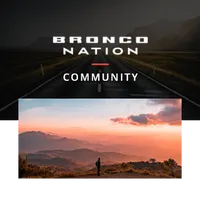This week is Bronco Sport Week and we’ll be bringing you more information on the Bronco Sport all week across our forums, Latest News Page, Instagram, and YouTube. For today here on the Bronco Nation Forums we’re diving into the Bronco Sport’s G.O.A.T. Modes. We’re going to get a little nerdy but some of you dyed in the wool off-road enthusiasts will still have questions, as we do ourselves. So let’s jump in.
G.O.A.T. Modes are part of the overall Terrain Management System (TMS) in the Bronco Sport. All Bronco Sports have the TMS with five G.O.A.T. modes but the Badlands and First Edition trims also have Trail Control and two additional G.O.A.T. Modes in their TMS.







Comments
You must log in or register to post here.